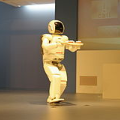Visual Language Models (VLMs) have emerged as pivotal tools for robotic systems, enabling cross-task generalization, dynamic environmental interaction, and long-horizon planning through multimodal perception and semantic reasoning. However, existing open-source VLMs predominantly trained for generic vision-language alignment tasks fail to model temporally correlated action semantics that are crucial for robotic manipulation effectively. While current image-based fine-tuning methods partially adapt VLMs to robotic applications, they fundamentally disregard temporal evolution patterns in video sequences and suffer from visual feature entanglement between robotic agents, manipulated objects, and environmental contexts, thereby limiting semantic decoupling capability for atomic actions and compromising model generalizability.To overcome these challenges, this work presents RoboAct-CLIP with dual technical contributions: 1) A dataset reconstruction framework that performs semantic-constrained action unit segmentation and re-annotation on open-source robotic videos, constructing purified training sets containing singular atomic actions (e.g., "grasp"); 2) A temporal-decoupling fine-tuning strategy based on Contrastive Language-Image Pretraining (CLIP) architecture, which disentangles temporal action features across video frames from object-centric characteristics to achieve hierarchical representation learning of robotic atomic actions.Experimental results in simulated environments demonstrate that the RoboAct-CLIP pretrained model achieves a 12% higher success rate than baseline VLMs, along with superior generalization in multi-object manipulation tasks.
翻译:暂无翻译





